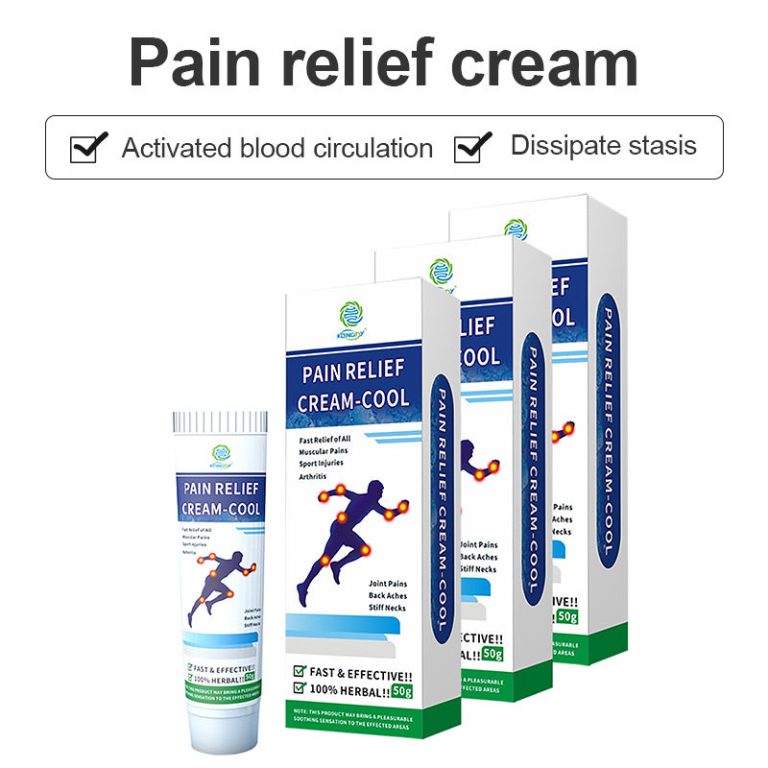For those suffering from chronic aches and pains, pain relief creams offer a simple way to target sore muscles, joints, and problem areas. As a seller of pain relief creams, this article explores the benefits of natural topicals, key ingredients that provide relief, proper usage instructions, and tips for effectively marketing your pain relief cream products.
- The Benefits of Topical Pain Relief
Pain relief creams and gels provide localized benefits including:
Targeted relief – Creams work directly on sore spots for fast-acting relief.
Anti-inflammatory action – Natural ingredients like menthol or camphor reduce inflammation causing pain.
Muscle relaxation – Menthol, turmeric, arnica and other botanicals relax tight, strained muscles.
Increased circulation – Capsaicin and other warming agents bring blood flow to painful areas.
Fast absorption – Topicals easily absorb into skin without needing to enter the bloodstream.
Avoid side effects – Topical creams don’t cause internal side effects like digestive issues or drowsiness.
Natural ingredients – Botanicals like menthol, aloe, and essential oils provide safe relief.
Pain management – Consistent use helps manage chronic back pain, arthritis, neuropathy, and more.
With targeted application and fast action, pain relief creams are a convenient way to manage discomfort.
- Directions for Proper Use
Be sure to provide clear instructions on how to properly apply pain relief cream:
Clean and dry skin thoroughly before application.
Apply cream or gel generously in a thick layer on affected areas.
Gently massage cream into skin to increase absorption.
For joint pain, rub around the joints but not directly on them.
Allow product to fully absorb into skin before dressing.
Reapply 2-3 times per day or as needed for pain symptoms.
Store in a cool, dry place away from direct sunlight.
Avoid contact with eyes, nasal passages, or open wounds.
Discontinue use if irritation develops. Do not apply to damaged skin.
For best results, encourage customers to be consistent in applying their pain relief cream.
- Key Ingredients to Highlight
Promote how these research-backed natural ingredients target soreness:

Menthol – Cools skin and blocks pain receptors to relieve muscle and joint aches. Also reduces inflammation.
Camphor – Analgesic that relieves muscle soreness, arthritis, and back pain when applied topically.
Arnica – Reduces swelling, inflammation, and bruising when used on bumps, sprains, and sore areas.
Capsaicin – Active compound in chili peppers that provides a warming sensation to distract from pain.
Turmeric – Anti-inflammatory curcuminoid in turmeric eases swelling and discomfort.
Peppermint Oil – Cools and soothes tender areas. Also has antimicrobial properties.
Eucalyptus – Has a cooling, analgesic effect on joint and muscle pain as well as respiratory congestion.
Magnesium – Relaxes tense, painful muscles and may reduce nerve sensitivity causing pain.
These natural, potent ingredients target aches without side effects.
- Marketing Tips for Sellers
Here are some tips for marketing your own brand of pain relief cream:
Focus marketing on social media platforms frequented by your target demographics such as older adults.
Highlight fast absorption and mess-free application of creams compared to ointments.
Tout the affordability and convenience of topical relief versus prescription methods.
Create educational videos demonstrating how to apply creams on different painful areas.
Offer loyalty subscription plans to encourage repeat purchases.
Partner with fitness influencers, yoga studios, and physiotherapists to reach active consumers.
Get third party certifications like USDA Organic, vegan, non-GMO, or cruelty-free.
Share customer testimonials praising your pain relief cream’s effectiveness.
By touting the safety, ease of use, and fast relief of natural pain cream ingredients, you can connect with consumers seeking topical pain management solutions. Consider these marketing angles to boost the visibility and sales of your pain relief products.






